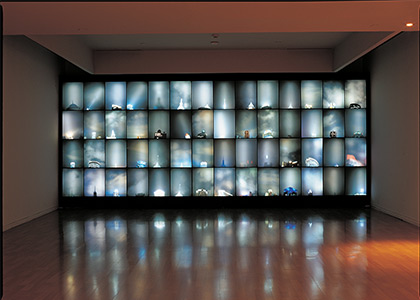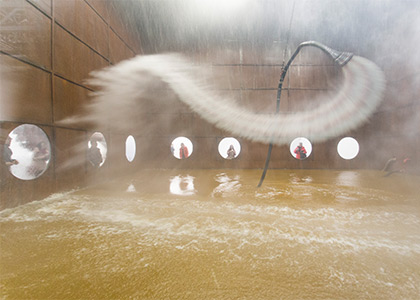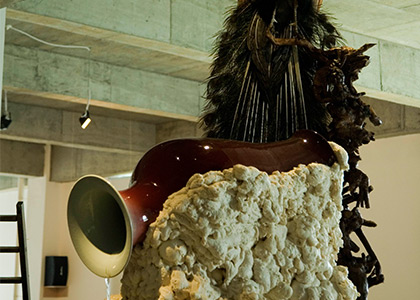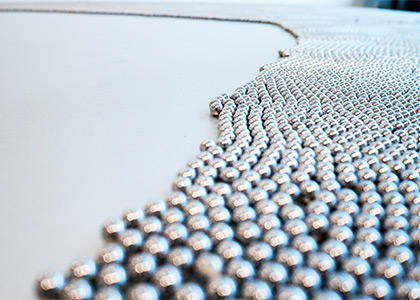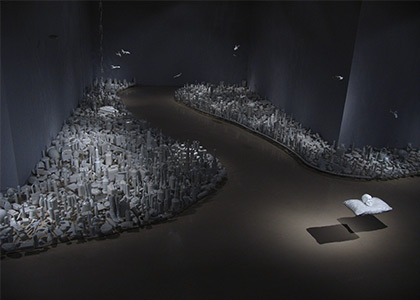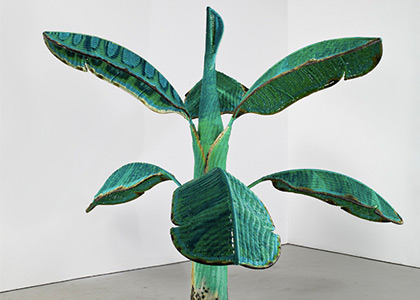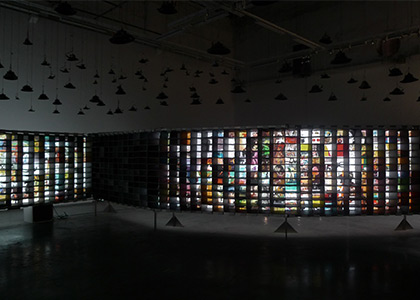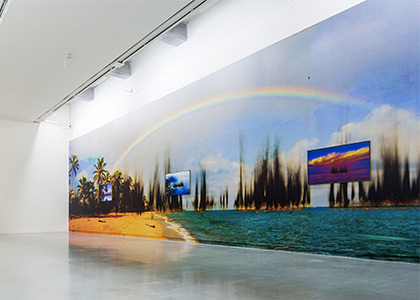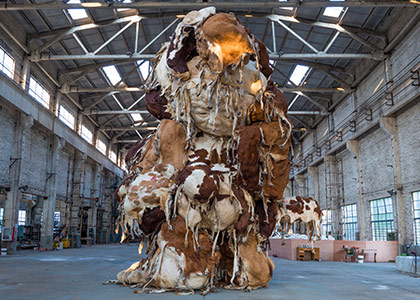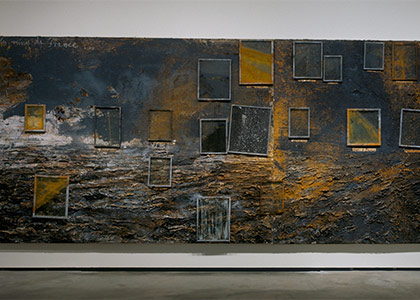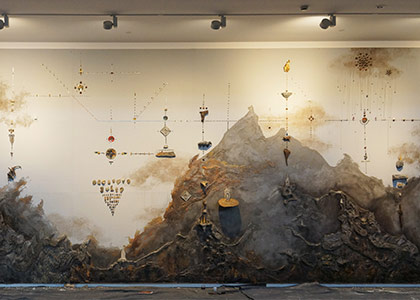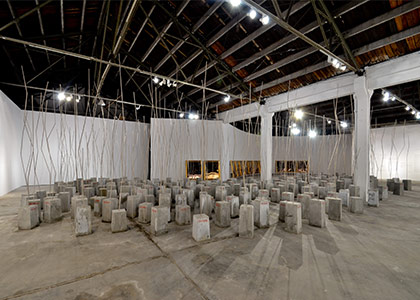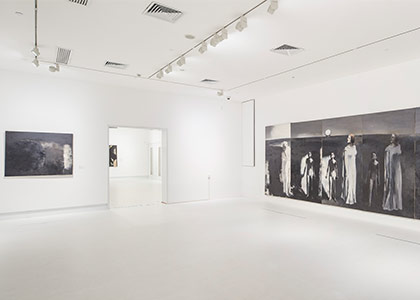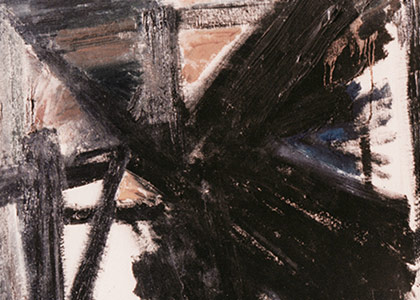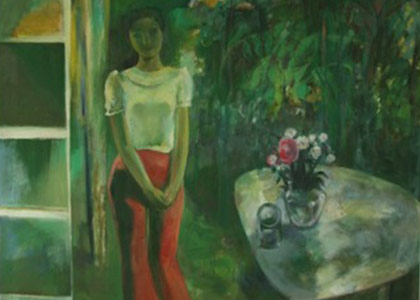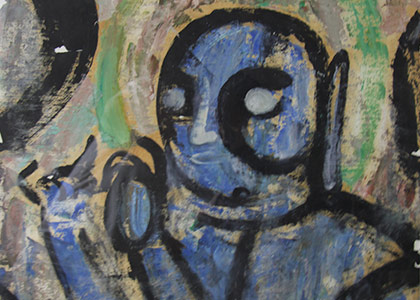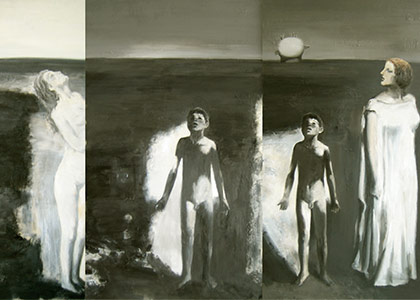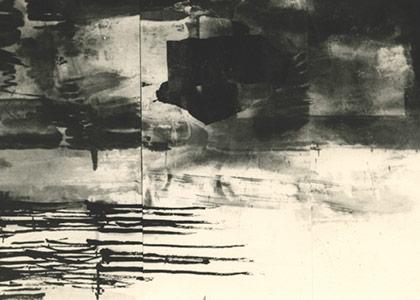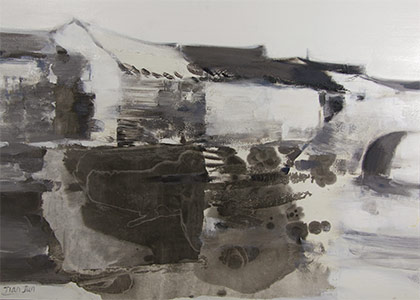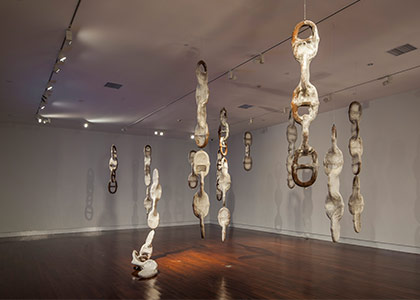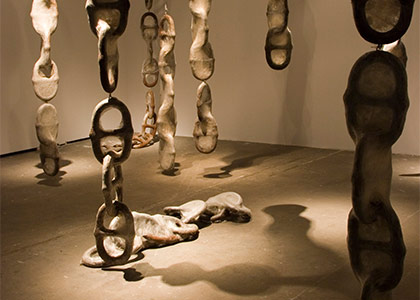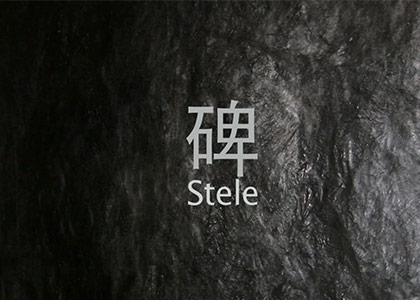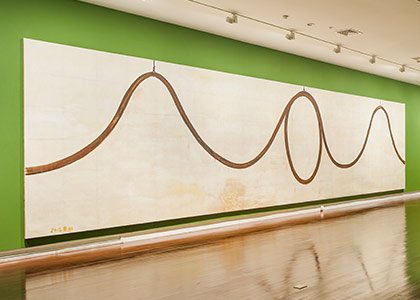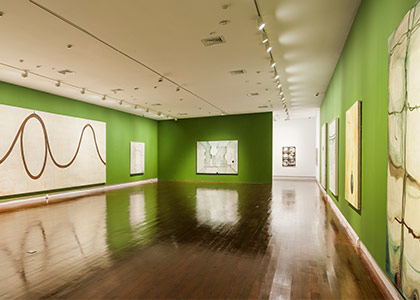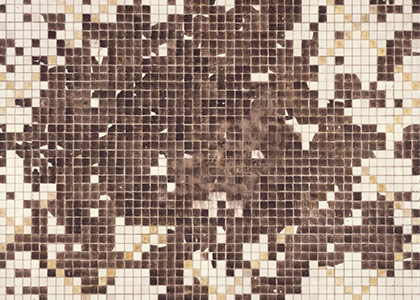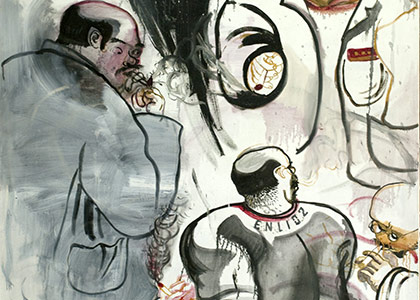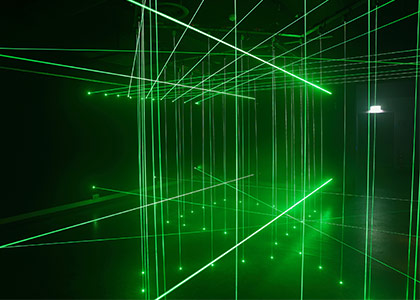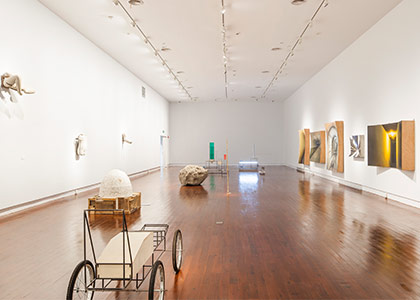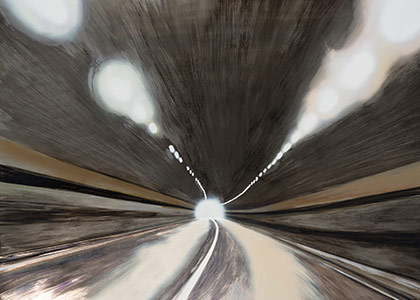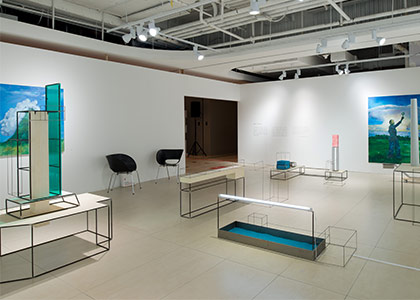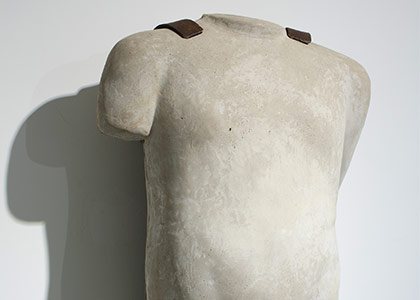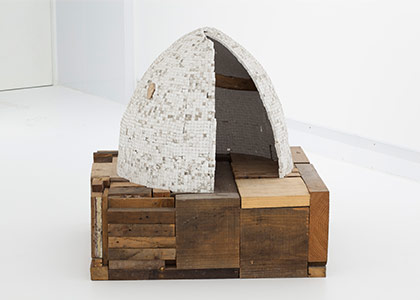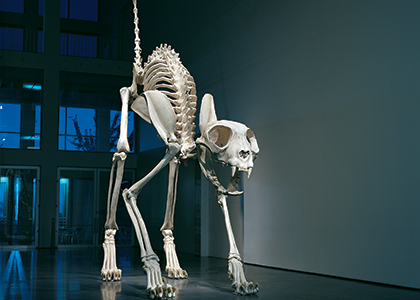
Artist: Maurizio CATTELAN
Work: Felix
Size: 183x610x792cm
Material: Oil on polyvinyl, resin, fibre-glass
2001
Born in Padua, Italy, the self-taught Maurizio Cattelan has created several remarkable works. His past experience as a chef, gardener, nurse, carpenter even as a caretaker of the dead bodies in the mortuary has certain influence on him for his artistic creation. Cattelan has a strong sense of humor and self-reflection that ranges from pop culture to history and even religious organization, His works seems to be very bold and rude, but yet he is at his most serious when he is most irreverent.
In the work Felix, Cattelan has transformed a household cat into an ominously gargantuan figure standing over 8 meters tall. The work is inspired by the cartoon character Felix the Cat and a full-scale Tyrannosaurus rex fossil display at the city's Field Museum of Natural History. Naming the skeleton after the cartoon character Felix the Cat, Cattelan jokingly undermines historical fact with fiction. With its back arched and tail in an alert position as if confronting a predator, it could be a frightening sight, resulting in a familiar and strange impression to the audience.








